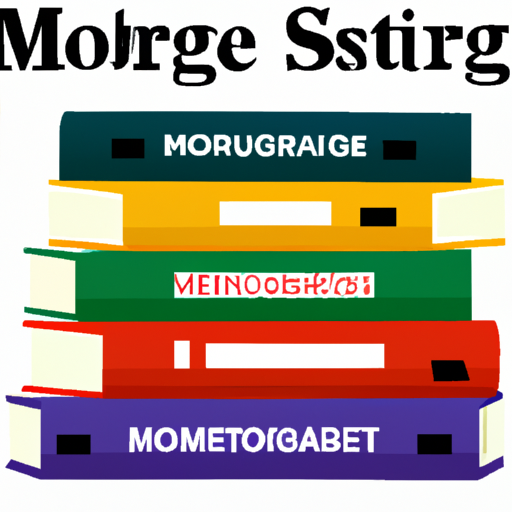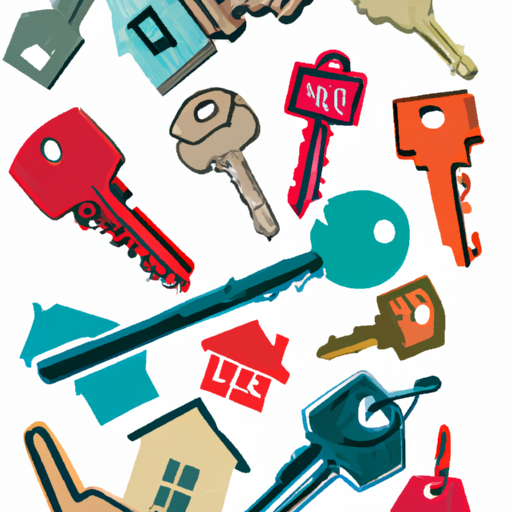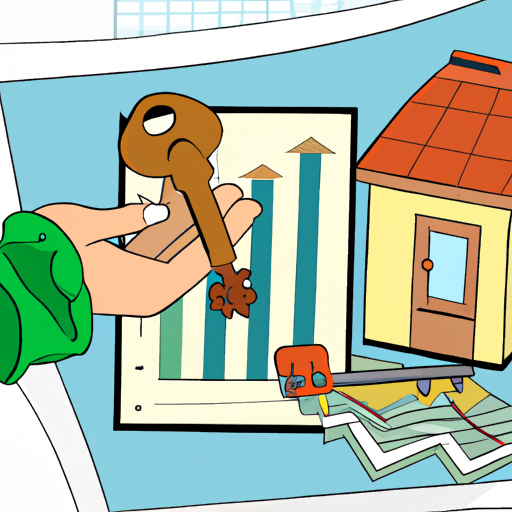This text explains essential mortgage terms, discusses different types of mortgages, and provides tips for saving money and building equity when navigating mortgage payments and interest rates.
Buying a home is one of the most significant financial decisions many individuals will make in their lifetime. While the process can be exciting, it can also be overwhelming, especially when it comes to understanding the ins and outs of mortgages. For first-time homebuyers or those looking to refresh their knowledge, mastering the basics of mortgages is crucial. This article aims to provide a comprehensive guide to 10 key concepts that every homebuyer should know. From understanding mortgage terminology to exploring different mortgage types and navigating mortgage payments and interest rates, this article will equip readers with the knowledge they need to make informed decisions and secure the right mortgage for their home purchase. Whether you are a first-time buyer or have experience in the real estate market, this article will provide valuable insights and tips for saving money and building equity. So, let’s dive into the world of mortgages and empower ourselves with the knowledge needed to navigate this complex aspect of homeownership.
- 1. Understanding Mortgage Terminology: Essential Vocabulary for Homebuyers
- 2. Exploring Different Mortgage Types: Finding the Right Fit for Your Home Purchase
- 3. Navigating Mortgage Payments and Interest Rates: Tips for Saving Money and Building Equity
1. Understanding Mortgage Terminology: Essential Vocabulary for Homebuyers

Understanding Mortgage Terminology: Essential Vocabulary for Homebuyers
When it comes to buying a home, understanding mortgage terminology is crucial. The world of mortgages can often feel overwhelming, with numerous terms and phrases that may be unfamiliar to first-time homebuyers. However, having a solid grasp of the key concepts and vocabulary can help you navigate the mortgage process more confidently. Here are ten essential mortgage terms that every homebuyer should know:
1. Principal: The original amount of money borrowed to purchase a home. It does not include interest or any other fees.
2. Interest: The cost of borrowing money from a lender, expressed as a percentage of the principal. Interest is typically paid over the life of the mortgage.
3. Down Payment: The initial payment made by the homebuyer towards the purchase price of the property. It is typically a percentage of the total purchase price and affects the loan amount and interest rate.
4. Amortization: The process of gradually paying off the mortgage loan over a fixed period, usually through monthly installments, until the loan is fully repaid.
5. Fixed-rate Mortgage: A type of mortgage loan in which the interest rate remains constant throughout the repayment period. This provides stability and predictability in monthly payments.
6. Adjustable-rate Mortgage (ARM): A mortgage loan in which the interest rate can change periodically, typically after an initial fixed-rate period. The interest rate adjustments are based on a specific financial index.
7. Closing Costs: Expenses, excluding the purchase price of the property, that are incurred during the homebuying process. These costs may include appraisal fees, title insurance, attorney fees, and other miscellaneous charges.
8. Pre-approval: A process in which a lender evaluates a borrower’s financial information and creditworthiness to determine the maximum loan amount they are eligible for. Pre-approval strengthens a homebuyer’s position when making an offer on a property.
9. Private Mortgage Insurance (PMI): Insurance that protects the lender in case
2. Exploring Different Mortgage Types: Finding the Right Fit for Your Home Purchase

When it comes to buying a home, one of the most important decisions you’ll make is choosing the right mortgage. With numerous options available in the market, it can be overwhelming to navigate through the different types of mortgages. However, exploring and understanding the various mortgage types is crucial to finding the right fit for your home purchase.
The two primary categories of mortgages are fixed-rate mortgages and adjustable-rate mortgages (ARMs). A fixed-rate mortgage is the most common type, where the interest rate remains constant throughout the loan term. This provides stability and predictability in monthly payments, making it an ideal choice for those who prefer a consistent budget.
On the other hand, an adjustable-rate mortgage (ARM) offers an interest rate that can fluctuate based on market conditions. Typically, an ARM begins with a fixed-rate period, usually lasting three, five, seven, or ten years. After the initial fixed-rate period, the interest rate adjusts periodically, typically annually. This type of mortgage is suitable for homebuyers who anticipate a change in their financial situation or plan to sell the property before the rate adjusts.
Another mortgage type worth considering is a government-backed loan. These loans are insured by government agencies such as the Federal Housing Administration (FHA) or the Department of Veterans Affairs (VA). A FHA loan is designed for first-time homebuyers or those with lower credit scores, offering more lenient qualification requirements. A VA loan, on the other hand, is exclusively available to eligible veterans, active-duty service members, and their spouses, providing them with favorable terms and benefits.
Besides these common mortgage types, there are also specialized mortgages tailored for specific situations. For example, a jumbo loan is used for financing properties that exceed the conforming loan limits set by Fannie Mae and Freddie Mac. These loans often come with higher interest rates and stricter requirements. Additionally, there are interest-only mortgages, where borrowers have the option to pay only the interest for a certain period, typically the first few years
3. Navigating Mortgage Payments and Interest Rates: Tips for Saving Money and Building Equity

When it comes to navigating mortgage payments and interest rates, there are several tips that can help homebuyers save money and build equity. Understanding these concepts and implementing smart strategies can make a significant difference in the long run.
1. Shop around for the best interest rate: Don’t settle for the first mortgage offer you receive. Take the time to research and compare interest rates from different lenders. Even a slightly lower interest rate can save you thousands of dollars over the life of your loan.
2. Consider a shorter loan term: While a 30-year mortgage is the most common choice, opting for a 15 or 20-year term can save you a substantial amount in interest payments. Although your monthly payments may be higher, you will pay off your loan much faster and build equity at a quicker pace.
3. Make extra payments whenever possible: Applying additional funds towards your mortgage principal can significantly reduce the total interest paid over time. Consider making extra payments whenever you have extra cash, such as tax refunds or work bonuses. Even small additional payments can have a big impact over the life of the loan.
4. Refinance when interest rates drop: Keep an eye on the market and consider refinancing your mortgage if interest rates decrease significantly. By refinancing to a lower rate, you can reduce your monthly payments and save money in the long term.
5. Avoid adjustable-rate mortgages (ARMs): While ARMs may offer lower interest rates initially, they can be risky in the long run. As interest rates fluctuate, your monthly payments can increase significantly, putting a strain on your budget. Opting for a fixed-rate mortgage provides stability and peace of mind.
6. Make biweekly payments: Instead of making monthly payments, consider switching to biweekly payments. By doing so, you’ll make 26 half-payments each year, which is equivalent to 13 full payments. This strategy can help you pay off your mortgage faster and save on interest.
7. Pay attention to extra fees:
In conclusion, mastering the basics of mortgages is essential for every homebuyer. By understanding the terminology, exploring different mortgage types, and navigating mortgage payments and interest rates, buyers can make informed decisions that align with their financial goals. Whether it is knowing the difference between fixed-rate and adjustable-rate mortgages, understanding the importance of down payments, or finding ways to save on interest payments, these key concepts empower homebuyers to make the most out of their mortgage experience. By taking the time to educate themselves and seek advice from professionals, homebuyers can confidently navigate the world of mortgages and achieve their dream of homeownership.

